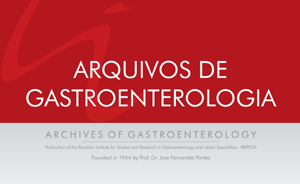CONTEXT: Hepatitis C is an important cause of chronic liver disease worldwide. The grading of hepatic fibrosis in chronic hepatitis C is important for better clinical management. However, until now, liver biopsy is the only test accepted for this purpose, despite their contraindications and complications. New methods for non-invasive assessment of hepatic fibrosis are under investigation. One proposal is the Doppler ultrasound, as a non-invasive, widely available and inexpensive. OBJECTIVE: To compare Doppler parameters of portal vein in patients with chronic hepatitis C with a healthy control group and to correlate these parameters with fibrosis degree obtained by liver biopsy. METHODS: Fifty patients with chronic hepatitis C submitted to liver biopsy and 44 healthy controls had Doppler of the portal vein performed, with the calculation of the portal venous index. We conducted a comparison between the averages of the two groups of portal venous index. For the correlation between portal venous index and fibrosis was employed the Spearman test. RESULTS: There was a difference between the average portal venous index between controls (0.33 ± 0.07) and patients (0.23 ± 0.09) with P<0.001. No difference was observed between the portal venous index in patients with chronic hepatitis C who have significant fibrosis or not. The correlation between the portal venous index and fibrosis degree was reverse and moderate (r =-0.448 P<0.001). The area under the ROC curve was 78.4% (95% CI: 68.8% to 88%). The cutoff for the portal venous index was 0.28 with sensitivity of 73.5% and specificity of 71.1%. CONCLUSION: The portal venous index was useful in distinguishing healthy patients from patients with CHC. However, there was no significant difference in the quantification of degree of fibrosis.
Hepatitis C, chronic; Liver cirrhosis; Portal vein, ultrasonography; Ultrasonography




